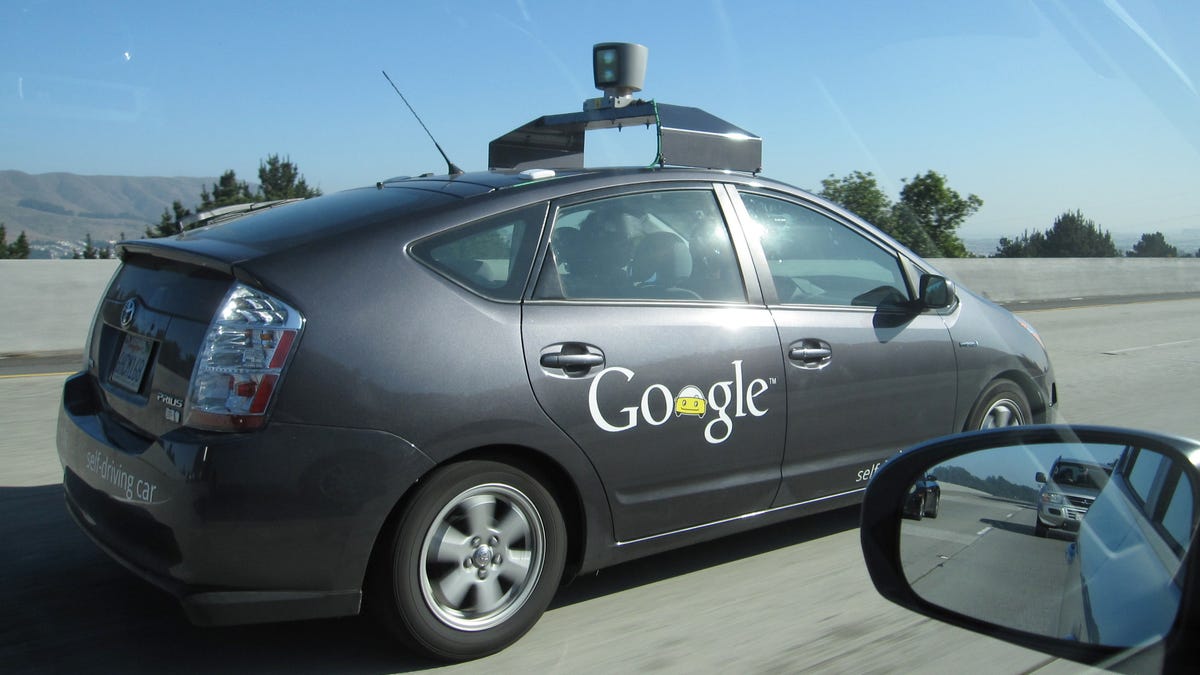Look Ma, no hands! Google lands patent for robot car
Google gets a patent for switching from human-driven vehicles to autonomous mode and then taking instructions from the Web over a wireless network on where to drive.

Google has added one more thing to the list of things it can do over the Web: tell a car where to drive.
The Internet giant earlier this week was granted a patent for a method of controlling an autonomous vehicle. Specifically, it details how a vehicle can transition from being human-driven to autonomous mode.
A car could, for example, drive to a specific location and based on a visual indicator on a "landing strip," such as a bar code or radio tag, the car would then transition to autonomous operation. One could imagine, for example, bringing a car to a roadway dedicated to autonomous vehicles where the transition would take place.
In a corporate blog post last year, Google said that it has hired some of the top autonomous-vehicle engineers to enhance the state of driverless cars. It isn't very specific about how this advances its business. But distinguished software engineer Sebastian Thrun said that the company's goal is to "help prevent traffic accidents, free up people's time, and reduce carbon emissions by fundamentally changing car use."
Engineers have equipped Toyota Priuses with sensors and communications that send large amounts of data back to Google's data centers to analyze and make driving decisions. In 2010, Thrun said it had logged over 140,000 autonomous miles.
In its patent, Google engineers detail the method for how sensors would find a marker to switch to autonomous mode and receive instructions from an Internet address over a wireless network. It also describes the design of an onboard computing device capable of handling the information needed for autonomous operation.

